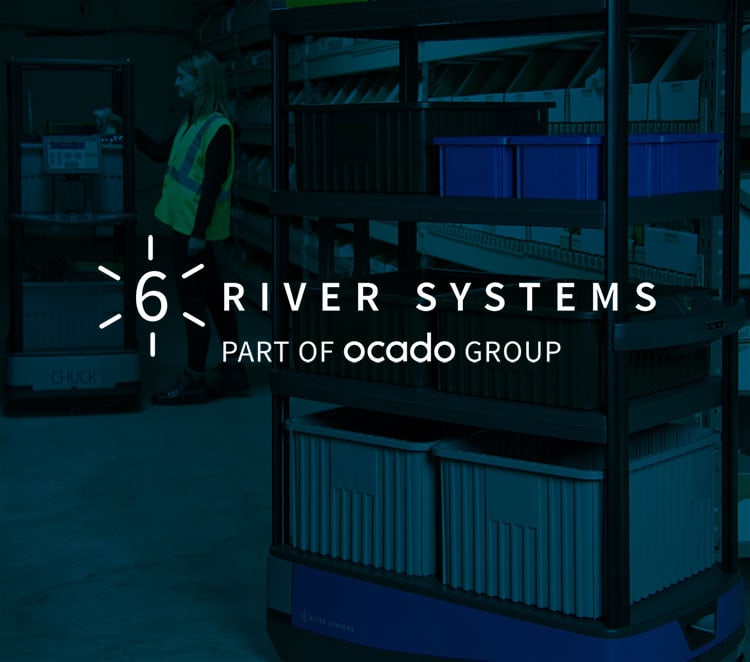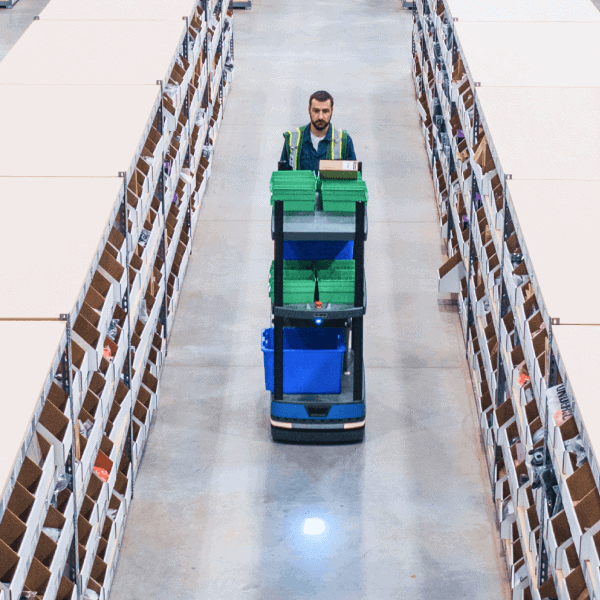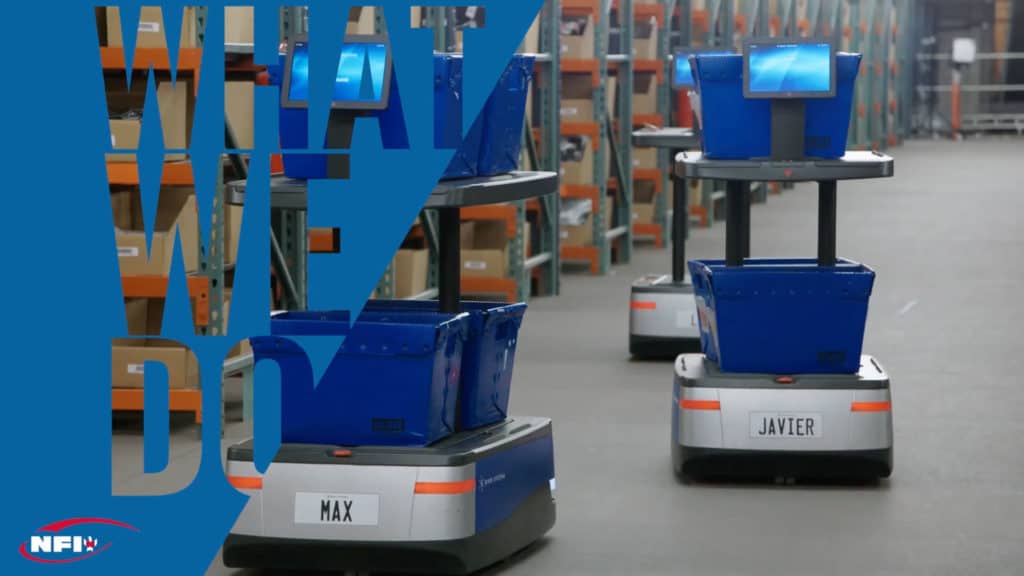With the growing need to reduce costs, improve efficiency and streamline warehousing operations, more and more businesses are embracing automated warehouse systems. Warehouse automation refers to the set of technologies (ranging from robots to processes) that offer the promise of automating warehouse operations to drive much higher levels of productivity. Advancements in technology are paving the way for a number of trends in warehouse automation that support warehouse efficiency, improve accuracy and enhance safety.
Forms of warehouse automation

All types of warehouse automation fall into two major groups: process automation and physical automation.
Process automation
Sometimes referred to as system automation, process automation is concerned with digitizing manual processes (like inventory data collection) and plugging in the resultant data into a warehouse management system (WMS), Enterprise Resource Planning (ERP) system or other such applications.
In process automation, barcoding and wireless barcode scanners are used to capture and track data, which is then sent to a central ERP or database and stored for future retrieval.
Physical automation
This form of automation covers all the mechanized equipment and solutions that help automate warehousing operations and order fulfillment. Essentially, it is the use of robots and robotic systems in warehouse operations. Although this form of automation can be capital intensive, it delivers improved productivity and cost efficiencies for large warehouses with high-volume fulfillment operations.
Both process and physical automation automate the difficult, time-consuming and repetitive aspects of warehouse operations, thus freeing up warehouse associates to focus on more important, high-value activities that require human intervention.
Trends in warehouse automation
Virtually all modern warehouses use one or more types of mechanized equipment or solutions for order fulfillment. Some examples include:
- Automatic storage and retrieval systems (ASRS)
- Product to picker systems
- Sorters
- Forklifts
- Conveyor systems
While these technologies do improve productivity and efficiency, they are designed for simple, repetitive, labor-intensive tasks that can be reasonably automated. Fortunately, technologies are being developed to facilitate better logistics and warehouse automation. Let’s explore some of the current warehouse automation trends.
AGVs/AMRs
Autonomous mobile robots (AMRs) and automated guided vehicles are becoming increasingly popular as more and more companies realize their value in supporting human activity. AGVs and AMRs come in different sizes and are designed to support a specific function within a warehouse. Examples of these robotic innovations include pallet movers, forklifts and floor cleaners.
Some independent load-carrying robots can move completed orders to loading bays using an algorithm that determines an optimized route through the warehouse. Other AGVs use lasers and magnets for navigation and can also follow markers on the warehouse floor to move products from one point to another. There are also pick and place robots that can retrieve SKUs off multiple-layered shelves using extendable arms with end-of-arm tooling options that allow them to grasp objects.
Cloud-based WMS
With cloud-based warehouse management solutions, companies no longer need to acquire and maintain the software and hardware needed to host on-premise WMS solutions. This reduces the burden on in-house IT staff, freeing them to focus on other high-value activities. Adopting a cloud-based warehouse WMS delivers the following benefits:
- Centralized access to information
- Cost reductions due to automation of previously manual functions
- More precise control over inventory
- Scalability
- Easier integration with other systems and software.
Using a cloud-based WMS is also much cheaper than deploying and operating an in-house data center.
Big data
The goal of warehouse automation is to achieve the highest levels of efficiency and productivity, increase customer satisfaction and improve bottom lines. This can be better achieved by analyzing performance data to find areas in warehouse operations that would benefit from improvements. This is where big data comes in.
The vast volumes of data generated by warehouse activities present an untapped opportunity for streamlining order fulfillment operations. Big data allows companies to detect and improve operational inefficiencies.
Internet of Things (IoT)
Successful automation of warehouse operations requires seamless communication between multiple moving parts in the distribution facilities. The Internet of Things connects all the disparate devices and systems in the warehouse ecosystem and tracks everything to maximize operational efficiency.
It’s the technology that ensures that robotic systems, AGVs and AMRs, ERPs and WMSs and human employees stay on the same page and work in sync. By strategically deploying IoT devices, warehouse managers can monitor and coordinate everything from a single touchpoint — whether it’s shipments, production levels, inventory, order fulfillment activities, etc.
Benefits of warehouse automation

Warehouse automation offers important benefits for warehouses, enabling them to accommodate customer demand and keep up with the competition. Here’s a look at a few of the most significant warehouse automation benefits.
Improved accuracy
One of the immediate benefits of automating warehouse processes and order fulfillment activities is a sharp decrease in manual errors. Some studies show that each order fulfillment error can cost companies as much as $300. This, combined with error rates ranging from 1 – 3% for most warehouses, significantly impacts bottom lines. Done right, warehouse automation cuts down error rates, reduces costs and increases accuracy.
Greater efficiency
Automated picking systems can identify the locations of SKUs almost in real-time and retrieve them via optimized routes. This drives greater efficiency and maximizes productivity in order fulfillment activities.
Warehouse automation also helps in streamlining replenishment activities. Accurate inventory counts make it easier to know when SKUs are nearing minimum reorder points. Reaching this point automatically triggers replenishment activities.
Enhanced safety
Warehouse automation systems are designed to reduce foot and equipment traffic going through the distribution facility. Lower traffic among the same paths means a reduced chance of an accident.
Although warehouse automation delivers significant value to warehouse operations, it can be challenging to get it right. However, the rewards are well worth the effort. Leveraging the right trends in warehouse automation gives you an edge over the competition while increasing customer satisfaction levels. Download our white paper, 7 Reasons Why Warehouse Robots Beat Traditional Automation, to learn more about collaborative robots and how they can benefit your company. We can also discuss the solution that’s right for you. Contact us today.


